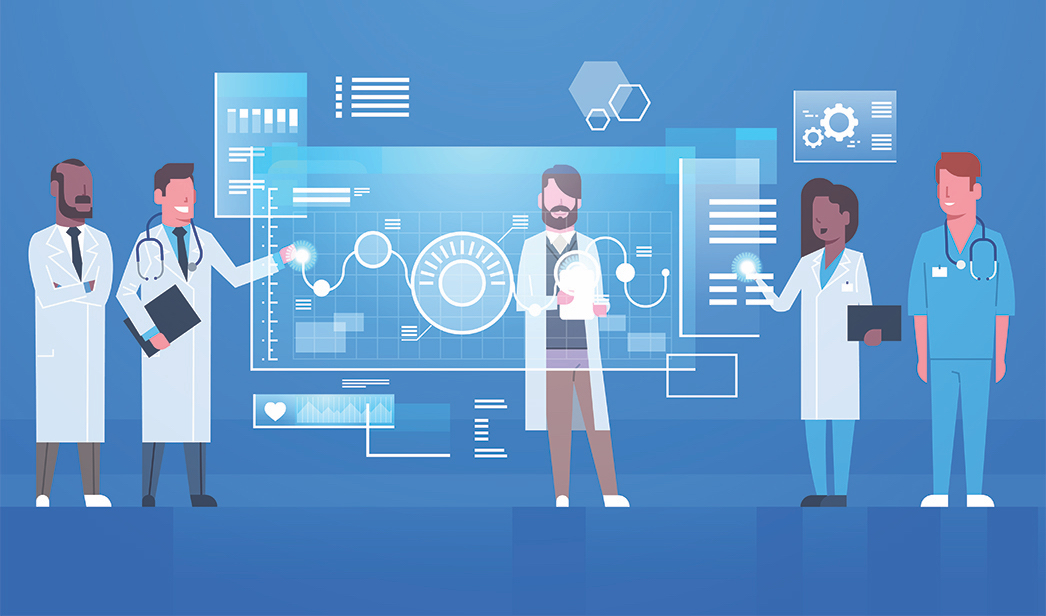Elevating Patient Care: Digital Transformation in Canadian Healthcare
The Canadian healthcare system is embracing a digital transformation, one that promises to revolutionize patient care, streamline operations, and improve access to medical services. In this blog post, we’ll delve into the exciting world of digital transformation in Canadian healthcare, exploring the technologies, (4)initiatives, and benefits that are reshaping the way healthcare is delivered across the country.
Telemedicine: Bridging the Distance Gap
Telemedicine has become a cornerstone of Canada’s healthcare landscape, especially in remote and underserved regions. Through video consultations and remote monitoring, patients can access medical expertise from the comfort of their homes. Telemedicine has not only improved access to healthcare but also reduced the burden on physical healthcare facilities.
Electronic Health Records (EHRs): A Unified Patient Story
The adoption of Electronic Health Records (EHRs) has enabled healthcare providers to access a patient’s medical history, test results, and treatment plans with ease. EHRs facilitate information sharing between healthcare facilities, leading to more coordinated and efficient care.
Wearable Health Tech: Empowering Patients
Wearable health technologies like fitness trackers and smartwatches are helping individuals take charge of their health. These devices monitor vital signs, track activity levels, and provide real-time health data. Patients can share this information with healthcare providers for more personalized care plans.
Artificial Intelligence (AI) in Diagnostics
(5)AI is revolutionizing medical diagnostics by analyzing vast amounts of patient data to identify trends and patterns. Machine learning algorithms can assist doctors in making more accurate and timely diagnoses, leading to better patient outcomes.
Virtual Reality (VR) in Therapy and Rehabilitation
Virtual reality is finding applications in physical therapy and rehabilitation programs. Patients can engage in immersive, interactive exercises that aid in their recovery, making the rehabilitation process more engaging and effective.
IoT and Remote Monitoring
The Internet of Things (IoT) is being used to remotely monitor patients with chronic conditions. Connected devices, like blood pressure monitors and glucose meters, transmit data to healthcare providers in real-time, allowing for early intervention and preventive care.
Blockchain for Data Security
Blockchain technology is enhancing data security and patient privacy in healthcare. Patient records can be stored on a secure, immutable ledger, ensuring that sensitive information remains confidential and tamper-proof.
Mobile Health Apps: A Health Hub in Your Pocket
Mobile health apps are empowering patients to take control of their well-being. These apps offer features such as medication reminders, symptom tracking, and access to medical information, making it easier for individuals to manage their health.
Population Health Management
Digital tools are helping healthcare providers manage the health of entire populations more effectively. By analyzing data, identifying high-risk individuals, and implementing preventive measures, healthcare organizations can optimize resource allocation and reduce healthcare costs.
Enhanced Data Analytics for Research
Digital transformation is facilitating large-scale data analytics in healthcare research. Researchers can analyze anonymized patient data to gain insights into disease trends, treatment efficacy, and public health strategies.
Challenges in Healthcare IT
Data Security and Privacy: With the digitization of healthcare records comes the challenge of securing patient data against cyber threats. Healthcare organizations must invest in robust cybersecurity measures to protect sensitive information.
Interoperability: Achieving interoperability between different EHR systems and healthcare facilities remains a significant challenge. The seamless exchange of patient data between systems is essential for providing comprehensive care.
Regulatory Compliance: Healthcare IT must adhere to strict regulatory requirements, such as the Health Insurance Portability and Accountability Act (HIPAA) in the United States and similar regulations in other countries. Compliance can be complex and costly.
Digital Divide: Not all patients have access to the internet or smartphones, creating a digital divide in healthcare access. Ensuring equitable access to telemedicine and wearable health tech remains a challenge.
Data Accuracy and Bias: AI and machine learning algorithms are only as good as the data they are trained on. Ensuring the accuracy and fairness of AI in healthcare is an ongoing challenge.
Costs and Implementation Challenges: Implementing advanced IT systems in healthcare can be costly and complex. Smaller healthcare providers may struggle with budget constraints and technical challenges.
Digital transformation in Canadian healthcare is a transformative journey that’s enhancing patient care, improving access, and optimizing resource allocation. As technology continues to advance, we can expect even more innovative solutions that will ultimately lead to a healthier and more efficient healthcare system. The fusion of healthcare and technology is not just a trend; it’s a fundamental shift that holds the promise of better health and well-being for all Canadians.
The Best IT Recruitment Agency in Toronto | About Live Assets | IT Staffing Solutions
Live Assets is a boutique IT Staffing/Recruiting firm specializing exclusively in building IT teams of excellence for the Information Technology sector.
We are a small, but productive team that works closely together and has had a 96% success rate for the past number of years!
We have a diverse number of clients and industries and focus on both full-time and contract I.T. opportunities.
You can find out more about our company on LinkedIn – Twitter – Facebook –Youtube – Glassdooor
